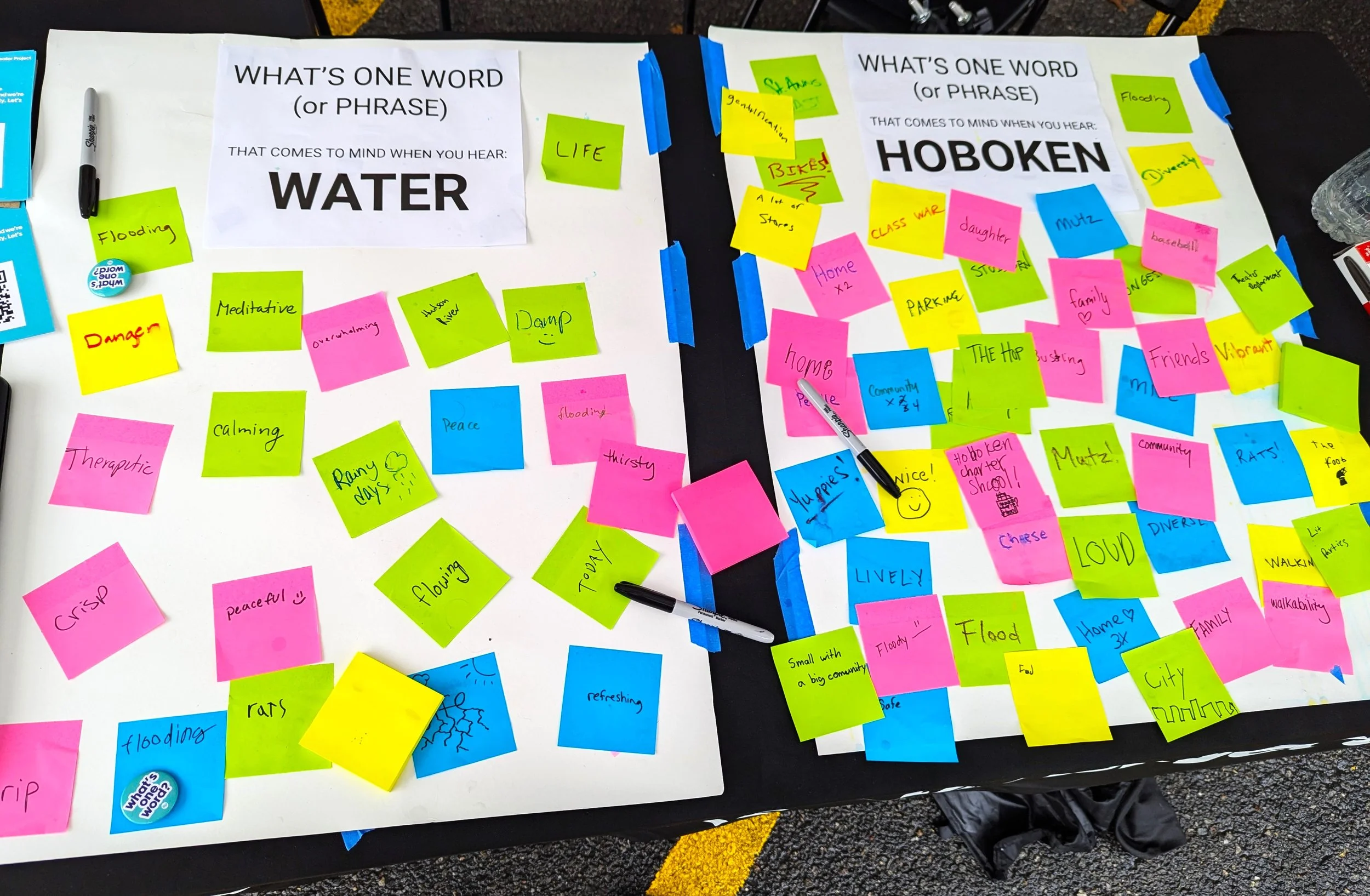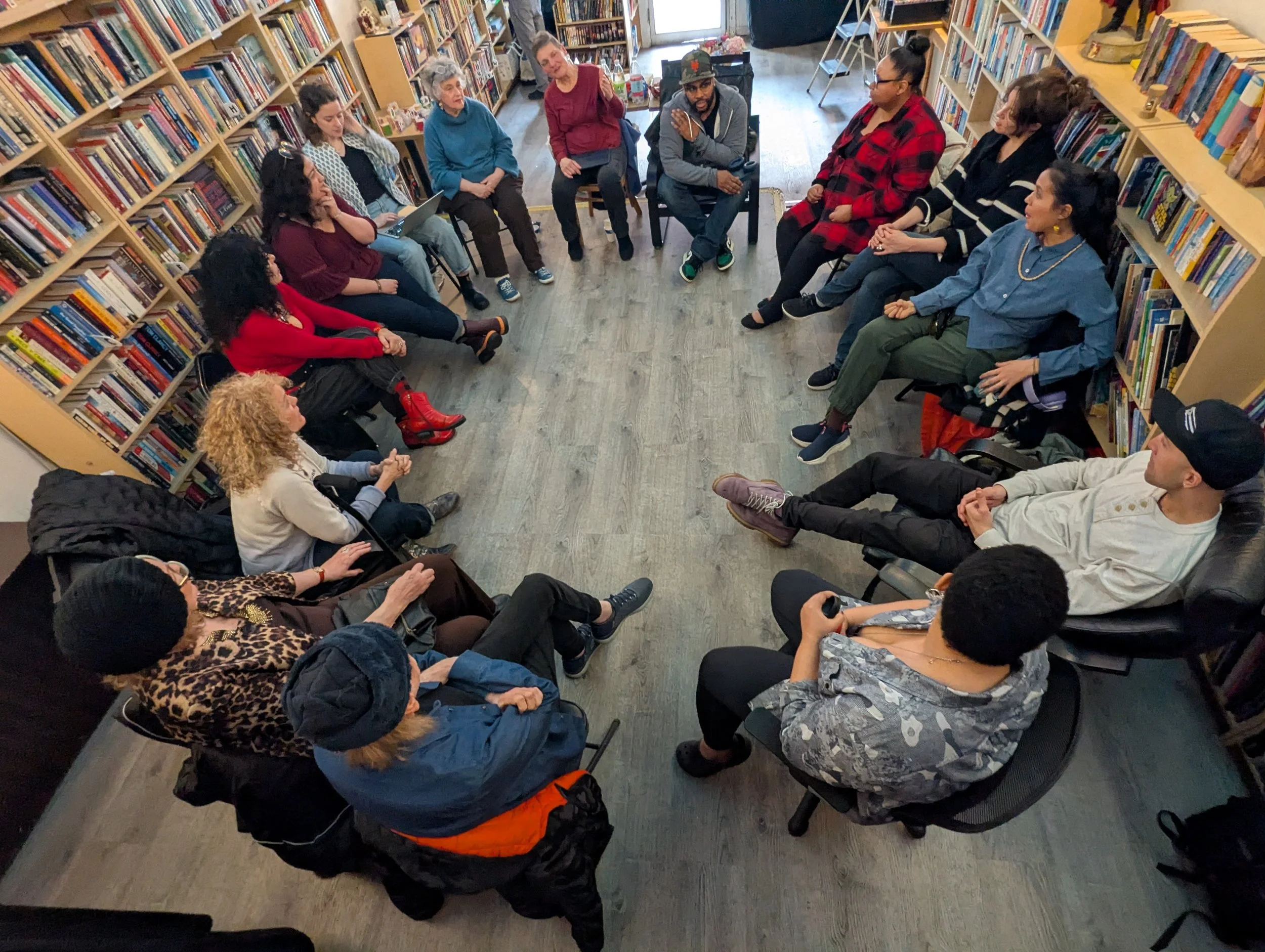Attendees at a street fair share what water in Hoboken signifies to them
Different groups living in Hoboken, NJ experience markedly disparate housing, environmental, and quality-of-life conditions. These divides have only grown wider due to decades of gentrification that sent rents skyrocketing, displaced lower-income populations, and fueled tensions between longtime residents and newer transplants. Starting last fall, however, residents throughout the riverfront city discovered that an innovative civic arts program could bridge key gaps and unite Hobokenites to address a pressing challenge — water.
Hoboken’s more than 57,000 residents live in a 1.25 square mile area, making it the fourth most densely populated city in America. Mainly white, better-off urban professionals have moved to its eastern neighborhoods since the 1970s, drawn by Hoboken’s proximity to and views of Manhattan. The western half — much of which sits at sea level — is where you’ll find most communities of color and mixed-income housing. And that half floods with alarming frequency, causing damage to local infrastructure, transportation disruptions, and negative health and economic effects.
Hoboken High School students engage in play-making to create “Recollection: A Hoboken Story”
Over the past nine months, with a grant from The Russell Berrie Foundation, artists with the Inheritance Theater Project (ITP) have worked to build bridges across Hoboken’s siloed communities. ITP, a theater company rooted in interfaith values, engages communities in creating art and performances that strengthen relationships across generational, racial, religious, and class divides. Having worked in communities from Omaha to Rwanda, ITP partnered with 15 area organizations and engaged more than 700 community members in conversation and creative expression on water, climate change, and flooding.
As the project progressed, Executive Director Jon Adam Ross shared, “We knew there was a flooding issue but didn’t realize the significant role class tensions were playing in how the community navigated this conversation.” To invite residents of different backgrounds and viewpoints into relationships with each other, ITP deployed local artists of all types to host discussion and play-making workshops throughout the city. People who rarely, if ever, crossed paths — interfaith clergy, city council members, activists, soup kitchen operators, and the city arborist, among others — gathered at houses of worship, a senior center, a community room in a public housing project, Hoboken High School, and trendy bookstores to explore the impact of water on their lives. Issues centered not only on the disproportionate harm of flooding in certain neighborhoods but also on equitable access to the prized Hudson River waterfront.
Residents gather at a local bookstore to discuss how water affects their and their neighbors’ lives
Ross described the workshops as rehearsing participatory democracy by creating participatory art. “We’re not inviting you into the room to debate…we’re inviting you into the room to create,” he said. With stronger ties in place, he hopes that at future city council meetings, residents and leaders can represent different viewpoints but engage in constructive dialogue because together they’ve brought community theater to life.
ITP Hoboken culminates in public performances of “Recollection: A Hoboken Story” at the Mile Square Theatre on May 30-June 1. Audience members are invited to pay what they wish for tickets, with all box office proceeds going to local artists’ continued bridge-building work.
Ross hopes the relationships and trust built through the play-making initiative will continue to grow. While the project’s curtain will have closed, community organizers, artists, activists, and residents will have the tools they need to overcome divides and co-create solutions that benefit everyone who calls Hoboken home.



